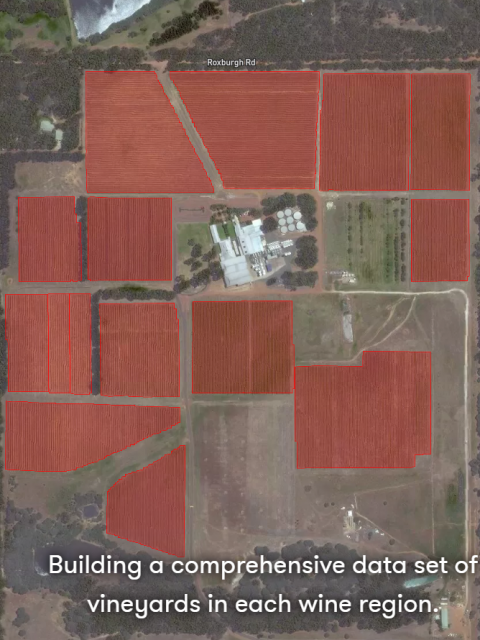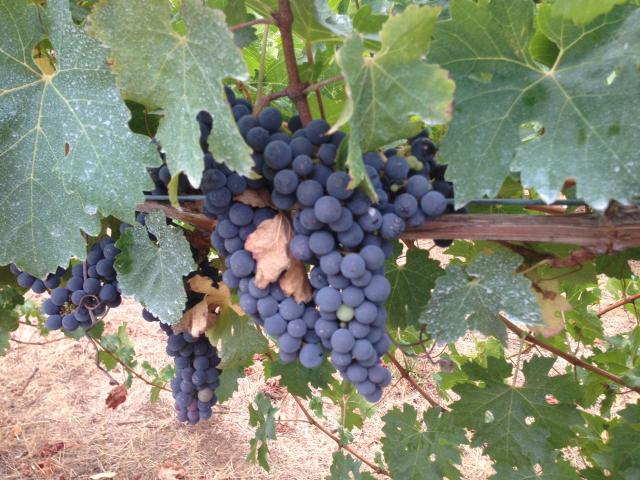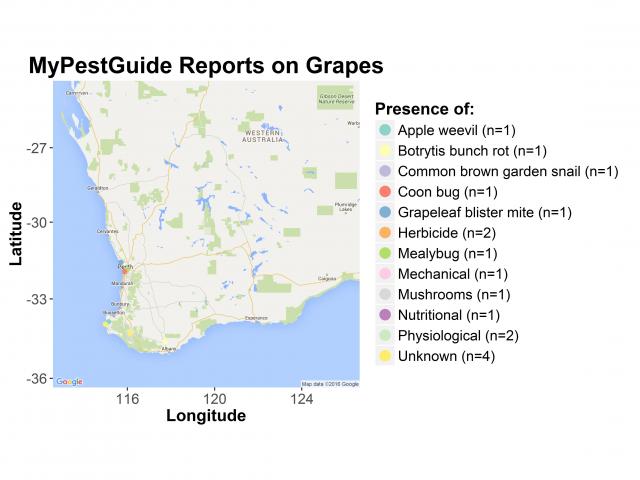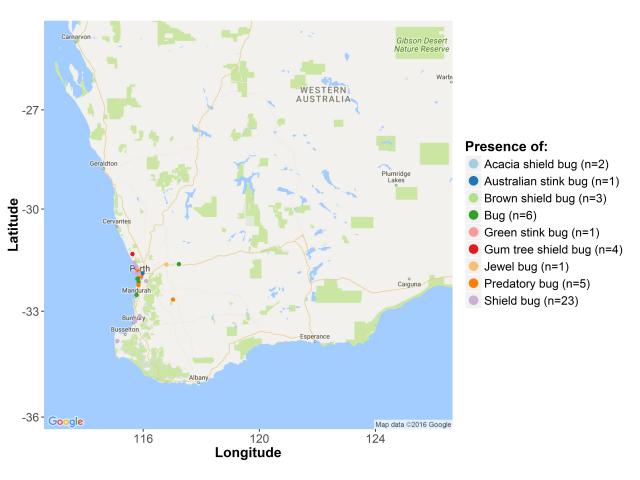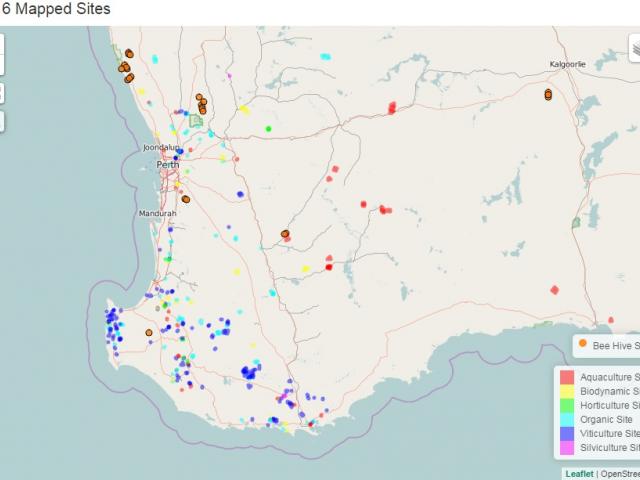Winemakers’ trial forum
Following the success of last year’s inaugural event, the Department of Agriculture and Food, Western Australia (DAFWA) again provided a forum for WA winemakers to come together and share different viticultural and winemaking trials.
Last year’s forum featured exclusively red wines, so this year’s theme focussed on white wine production.
With a full venue of 24 winemakers from the Geographe, Margaret River and Great Southern wine regions, nine trials were presented featuring Chardonnay, Sauvignon Blanc, Semillon and Fiano. The group tasted the wines ‘blind’, followed by a group discussion on differences and preferences of the various treatments.
Trials included:
- A comparison of six different Chardonnay clones
- Sauvignon Blanc cold settled vs floatation
- Sauvignon Blanc fermented on skins in oak vs plastic vessels
- Comparing Chardonnay fermented with high and low solids
- Impact of nutrient addition to Chardonnay wild ferment
- Comparing Chardonnay wild ferment with non S.cerevisiae
- Impact of timing of sulphur dioxide addition to Chardonnay barrels
- Fiano – stainless steel vs barrel fermented
Chardonnay clones
This trial featured six Chardonnay clones produced from a vineyard in Mount Barker, including French Bernard clones 76, 95, 96, 277; Californian I10V1 and our local Gingin clone. 45% of the group ranked the 277 clone as the most preferred, followed by the 95 and Gingin clones who were equally preferred by 20% of the group. Those who preferred 277 described the wine as having greater balance and generosity than the others. Clone 76 was the least preferred due to its high acidity which some thought may make it more suitable for sparkling wine production.
Sauvignon Blanc cold settled vs floatation
Comparing two commercial grade Sauvignon Blancs which had their respective juice clarified by conventional cold settling and floatation. Floatation was clearly preferred at 65% as the wine showed to be brighter and more vibrant than the cold settled version. Discussion on experiences using floatation to clarify juices were positive as the quality of the wine was not compromised, the speed of which juice can be clarified, and the ratio of cost versus return from the necessary equipment.
Semillon cold settled vs floatation
Following from the previous trial with Sauvignon Blanc, this was an identical trial featuring Semillon. Preferences between the wines were closer but floatation was still the preferred treatment at 52%. Again the discussion was that floatation provides a cost effective opportunity to improve efficiencies in refrigeration, settling times and lees recovery without detriment to quality.
Sauvignon Blanc skins ferment
A parcel of Sauvignon Blanc was fermented on skins, half of which was in a plastic vessel and the other half in an oak vat. The preference was given to the plastic vessel parcel as the oak was perhaps too apparent on the wine. The panel discussed the role of skins in white wine fermentation, ‘natural’ winemaking and how this treatment could provide an interesting blending component when making a more conventional style.
Chardonnay solid levels
Two Chardonnay’s fermented with juice turbidity’s of 68 and 327 NTU were compared; the panel was split in terms of preference as both wines were described as high quality examples of the variety. Most winemakers indicated they preferred fermenting Chardonnay with higher solids but this trial interestingly showed that a low turbidity juice can also produce quality wines of a slightly different style. This trial demonstrated solids can contribute to stylistic differences but not necessarily quality differences.
Chardonnay nutrient regime
Two parcels of Chardonnay were wild fermented, one with a commercial yeast nutrient added and one with no supplement. The majority of the panel preferred the wine with no addition. Wild ferments can be at times be difficult to complete to sugar dryness but winemakers commented that this year ferments were strong and issues were rare.
Chardonnay yeast trial
A split parcel of Chardonnay was inoculated with a Torulaspora Delbrueckii yeast strain while the other was left to a wild ferment. This approach was aimed to replicate the profile of a wild ferment by using a commercial yeast preparation. Differences were noted between the wines and the wild ferment was preferred.
Chardonnay sulphur dioxide timing trial
Chardonnay barrels received sulphur dioxide immediately after fermentation and one month post-fermentation. At 74% the panel preferred the later addition which was described as having greater depth and complexity. But again the preference scores were based on style rather than quality as both wines were good examples of regional Chardonnay.
Fiano
There are not many plantings of this Italian white variety in Western Australia so the panel found these wines of great interest. The two wines shown were a stainless steel and barrel fermented versions of the same parcel of fruit. The two wines were very different in style but both showed varietal traits. The barrel fermented wine was the preferred of the two at 65%, but overall the panel found the two wines would complement each other in a blend.
DAFWA intends to hold this forum on a regular basis to provide WA winemakers with the opportunity to share experiences and promote innovative approaches to improving production efficiencies and wine quality.
VinSites puts your business information at your fingertips
Analysing and understanding your vineyard business performance has become much easier with the release of Wine Australia’s new, free web-based tool.
Launched in WA, VinSites allows grape growers to manage their own vineyard and vintage information and in future, comparison of performance against regional averages.
Each vineyard in WA has been detected and mapped using satellite technology - we now know there are 200 000 rows and 16 500 hectares of vines in WA.
All of this information is stored in VinSites where growers can go online and link their vineyard map with their production information.
Users can measure their own business performance over time, and compare with other businesses based on vineyard size, region and variety.
All the information you need to start using VinSites is at www.VinSites.wine. It's user friendly and free to use.
Michael Rocca
Senior Business Analyst, Wine Australia
Stay up to date on locust activity
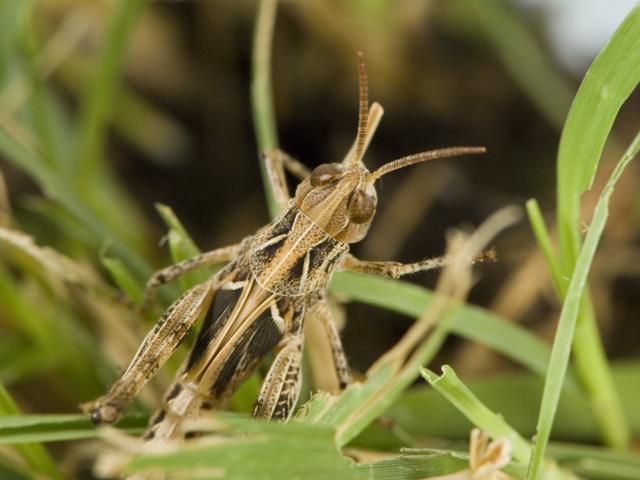
The Department of Agriculture and Food, Western Australia (DAFWA) is advising landholders in the viticulture regions of the south west and south coast to be aware of Australian Plague Locust (APL) activity occurring during spring/early summer.
Locust activity is predicted across eastern and southern parts of the grainbelt during spring with the potential for loose swarms to form and later enter viticulture regions.
Environmental conditions, wind direction and summer rainfall will impact the movement of migrating bands of locusts.
High risk areas include high-value agricultural land adjacent to areas of high locust density such as the shires of Cranbrook, Plantagenet and Albany. The shires of West Arthur, Boyup Brook and Kojonup are likely to experience APL activity as migrating swarms are likely to form in the Katanning region.
Landholders are reminded to inspect their properties for locust activity and start preparing for control if necessary.
Control in vineyards should be initiated as soon as any locust damage becomes evident. Grapevines are mainly susceptible to adult locusts rather than hoppers and should be monitored for damage.
Landholders are responsible for control of locusts on their property and should assess spraying requirements early on. It is vital landholders control locusts by spraying at the right time to minimise damage to valuable assets.
Check the insecticide label before using chemicals to ensure the minimum withholding periods before harvest are observed. For more information, visit DAFWA's Australian plague locust control: horticultural crops webpage.
Landholders are encouraged to use the department’s free PestFax Reporter app to report any locust activity to assist with mapping locust movements or the department’s Pest and Disease Information Service (PaDIS) on 1800 084 881.
Further information on identification, monitoring and control for locusts is available from DAFWA's website agric.wa.gov.au/locusts or call PaDIS on the number above.
Wine Australia’s Regional program
Summary of 2016/17 activities for regional Western Australia
The Regional Program is a key initiative of Wine Australia to actively encourage and support innovation, extension and adoption of R&D in the Australian wine industry.
The program allows grape growers and winemakers to:
- identify their region’s highest priority innovation, extension and adoption issues
- evaluate new concepts and technology in their own region to measure regional benefits of adoption
- identify aspects of production to ensure the region is sustainable into the future
- assist with uptake of new tools and research findings.
The $50 000 program is managed by Wines of WA and the West Australian Wine industries technical committee, and is aligned with the West Australian Wine Industry Strategic Plan 2014 - 2024 (Focus area - Innovative research, development & extension). Future plans will include reference to the WA Wine industries newly-formed Agricultural Produce Committee.
The following sections provide a summary of the four activity areas in the 2016/17 program:
1. Updating growers on managing Garden weevil
Garden weevils present an ongoing management problem for producers in the Great Southern and Margaret River regions. With the availability and ongoing use of the insecticide `Indoxacarb' (Avatar®) for control of garden weevil, some producers consider there is an over-reliance on this one insecticide, which presents an inherent risk of insecticide resistance developing in Garden weevil.
The project will examine alternative strategies to managing garden weevil through a review of current and emerging practices, and support a group of producers to trial and demonstrate identified alternative practice management strategies with potential to replace Indoxacarb. This will encourage practice change for managing Garden weevil through the identification and demonstration of a broader range of management options.
The DAFWA entomology team will undertake a desktop review to determine emerging best practice management for Garden weevil, and contact appropriate research providers for additional information relevant to conducting trials in West Australian vineyards. These trials/demonstrations will be used to extend research findings to the broader wine grape producing audience.
2. Evaluating and demonstrating alternative varieties
Approximately 80% of Western Australia's wine grape production comprises of five 'noble' French varietals. Reliance on such a small collection of varietals to sustain the profitability of the WA wine industry, while considering challenges such as climate change and market trends, poses potential limitations. One tool available to growers to ensure continuation of optimum production while addressing issues such as increasing temperatures, compressed growing seasons, limited water availability, is through varietal selection.
This project aims to change the way growers think when considering varieties that best suit their region by pairing varieties with climates (current and forecasted). Demonstrating the potential of such varieties through wine tastings and field walks is an integral pathway to adoption.
This project provides funding for DAFWA to collect vine performance data, small-lot wine making, and sensory analysis of a number of select “alternative varieties” currently grown at Harvey Agriculture College.
3. Benchmarking and extending information on improving fertiliser management
This activity will build the capacity of producers to better understand and interpret soil, irrigation water and petiole sample analysis results to improve fertiliser and irrigation management practices. This activity uses the skills of an independent agronomist to work one-on-one with a number of wine grape producers in the Geographe region to evaluate their irrigation and nutrition regimes via water, soil and petiole tests and vine performance records.
The aim is to help wine grape producers improve nutrition and irrigation practices to achieve targeted yield and quality outcomes. Results will be benchmarked against regional and industry standards.
4. Cabernet Hang-time forum
Funding for this activity will be used to host forum in Margaret River in January 2017, themed around Cabernet Hang-time. This forum builds on the preliminary vineyard trials, small batch winemaking and sensory evaluation work conducted by Curtin University, AWRI and DAFWA. The forum will include a guest speaker from California and updates on current research on Hang-time being conducted throughout other regions in Australia and overseas.
The forum will encourage local grape growers and winemakers to participate in the discussions while gaining a better understanding of the most appropriate time to leave Cabernet fruit on the vine to achieve the required fruit/wine quality.
If you would like more information on any of these activities please contact Wines of WA - Larry Jorgensen; ceo@winewa.asn.au or Keith Pekin; keith.pekin@perthnrm.com
Keith Perkin
Perth NRM
Protect your industry by reporting pests of grapes
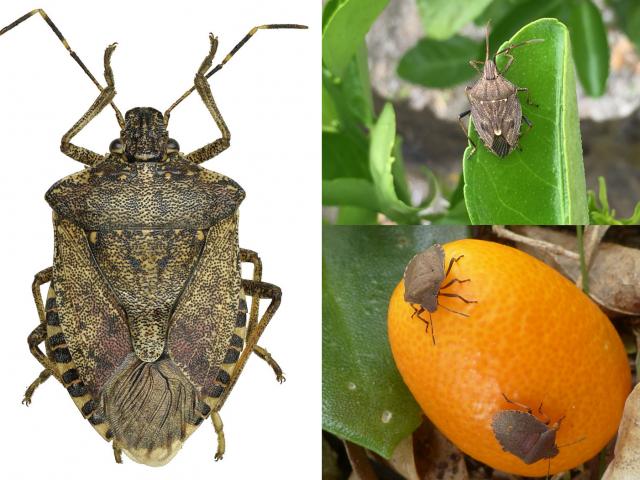
While you may think you have plenty of pests to contend with when growing grapes, there are other pests which could cause economic pain that we don’t have in Western Australia, such as Phomopsis cane and leaf spot (Phomopsis viticola) – and let’s try and keep it that way.
Western Australia has quarantine procedures in place to reduce the likelihood of new pests making their way into WA, but incursions do occur from time to time. To help eradication or containment, early detection is essential.
To assist with early detection, the Department of Agriculture and Food, Western Australia (DAFWA) has produced a mobile reporting application ‘MyPestGuide Reporter’ and an accompanying mobile app ‘MyPestGuide Grapes’ to help with initial identification.
These applications have been available to growers from last season. The following is a summary of the reports made of pests on grapevines for the 2015/16 growing season, and how reports of common pests can be used to infer freedom of an exotic pest.
Summary of MyPestGuide reports of pests on grapevines:
- There were 19 reports on grapes made using MyPestGuide Reporter from 21 September 2015 - 15 July 2016.
- Reports were made of a range of pests and diseases; fungal bunch rots, weevils, snails, mites, moths and mealybugs as well as mechanical damage, nutritional deficiency, herbicide damage and physiological issues (see Table 1).
- Reports were made from the South-West region, Albany, Perth and Carnarvon in WA as well as 2 interstate reports (see Figure 1).
Table 1 Number of reports of each pest affecting grapevines made via MyPestGuide reporter for season 2015/16.
| Common name | Pest | No of reports |
| Unknown | Unknown | 4 |
| Herbicide | Herbicide | 2 |
| Physiological | Physiological | 2 |
| Apple weevil | Otiorhynchus cribricollis | 1 |
| Botrytis bunch rot | Botrytis cinerea | 1 |
| Bunch rot | Fungus | 1 |
| Common brown garden snail | Cornu aspersum | 1 |
| Coon bug | Oxycarenus arctatus | 1 |
| Grapeleaf blister mite | Colomerus vitis | 1 |
| Grapevine moth | Phalaenoides glycinae | 1 |
| Mealybug | Pseudococcus spp. | 1 |
| Mechanical | Mechanical | 1 |
| Mushrooms | Fungus | 1 |
| Nutritional | Nutritional | 1 |
Figure 1 Location of MyPestGuide reports on grapes, by pest for season 2015/16
Using reports to infer pest freedom
While the early detection of pests was a key purpose for the development of MyPestGuide Reporter, another valuable use is to provide evidence certain pests are not present in WA. This information can be used for market access requirements. The following summary shows how reports of various native and introduced shield and stink bugs can be used to infer freedom of a similar and economically significant exotic pest the Brown marmorated stink bug (BMSB).
Summary of MyPestGuide reports of shield and stink bugs as inference reports for BMSB:
- There were 46 reports of shield bugs and stink bugs similar to BMSB, made using MyPestGuide Reporter from 21 September 2015 up to 15th July 2016.
- Reports were made of numerous pests, including; Bug, Green stink bug, Shield bug, Acacia shield bug, Brown shield bug, Gum tree shield bug, Predatory bug, Jewel bug, and Australian stink bug (see Table 2).
- Reports were made from the Perth metropolitan area, and the Gascoyne, Wheat belt, Bunbury and Augusta/Margaret River/Busselton regions (see Figure 2).
- Zero reports made of BMSB.
Table 2 Number of reports of each shield/stink bug suitable for inference reporting of Brown marmorated stink bug reported, season 2015/16
| Common name | Pest | No of reports |
| Shield bug | Poecilometis | 18 |
| Bug | Pentatomidae | 6 |
| Predatory bug | Cermatulus nasalis | 5 |
| Shield bug | Pseudapines geminata | 4 |
| Brown shield bug | Dictyotus caenosus | 3 |
| Acacia shield bug | Alcaeus varicornis | 2 |
| Gum tree shield bug | Poecilometis lineatus | 2 |
| Australian stink bug | Austromalaya reticulata | 1 |
| Green stink bug | Piezodorus oceanicus | 1 |
| Gum tree shield bug | Poecilometis strigatus | 1 |
| Gum tree shield bug | Theseus modestus | 1 |
| Jewel bug | Coleotichus costatus | 1 |
| Shield bug | Platycoris minimus | 1 |
Figure 2 MyPestGuide reports of shield/stink bugs suitable for inference reporting of Brown marmorated stink bug, season 2015/16
While the number of reports of pests on grapevines is not high, it is a start and we hope to see many more reports coming in this season as growers become accustomed to using MyPestGuide Reporter. We are encouraging growers to report all pests they encounter on their grapevines because all reports are useful in the effort to protect the grape industries, their markets and the environment.
The MyPestGuide Grapes activities are part of DAFWA's Boosting Biosecurity Defences Project, made possible by Royalties for Regions funding.
Nichole Hammond and Alec McCarthy
DAFWA
Grape and wine project update
The Department of Agriculture and Food, Western Australia (DAFWA) Grape and wine project works in a number of areas along the value chain from vine to glass, to support the profitable growth and development of the Western Australian wine industry.
We work closely with industry to leverage innovative ideas and resources needed to achieve these goals.
In recent years, we have increased our investment in market development to align with industry’s current highest priority, while maintaining our efforts in research, science and innovation which underpins future industry development.
Activities include:
1. Clones for climates
This national project aims to increase our understanding of how clones perform in different climates and how they contribute to wine style, to assist growers' decision making in using the best performing plant material for their current and future climates.
The project evaluates the viticultural and wine sensory attributes of a range of Chardonnay clones (Bernard clones 76, 78, 95, 96, 277; I10V1; I10V5 and Gingin) and Shiraz clones (BVRC 12, 30; SA 1654; PT 15, 23; Tahbilk R6W; SARDI 14, 17; WA selection; Best Great Western Vineyard 1866) in trials on mature vines in different climatic wine regions (Riverland, Grampians, Margaret River, Great Southern, Drumborg, Barossa and Mt Langi Ghiran).
Preliminary results have been presented at the Australian Wine Industry Technical Conference in July 2016 (plenary session and workshop), and at various regional tasting workshops in WA and around Australia.
Findings to date indicate: significant differences in wine sensory attributes between clones and regions, within a region there are significant differences between clones in most of the wine sensory attributes and seasonal differences.
Sensory assessment of 2015 Chardonnay wines showed that the clones in the Margaret River and Great Southern regions were grouped and rated higher in overall fruit flavour, floral, confection, tropical fruit aroma, stonefruit aroma, overall aroma and citrus aroma. All Riverland clones rated highly in sweaty/cheesy, flint, savoury/meaty and vegetal attributes. Two clones from Henty rated highly for green flavour and acidity. In the Grampians clones were mainly grouped with higher vegetal aroma, savoury/meaty, sweaty/cheesy, bitter, green flavour acid and astringency attributes.
The 2016 wines are still to be evaluated. The project is expected to be extended another year to make Chardonnay wines. Genomic sequencing of selected Chardonnay clones including Gingin and Mendoza will be conducted.
Australian wine growers are keen to understand more about clones and have indicated their interest in Cabernet Sauvignon clones in future projects.
2. Winemakers’ trial forum
It is important our regions work together to improve viticulture and winemaking skills, to maintain and improve grape and wine quality. The annual WA winemakers’ forum was held to share knowledge and learnings from different viticultural and winemaking trials.
Winemakers who share their trials receive valuable, honest and expert feedback on their wines. Those who attended gain insight into unique viticultural and winemaking techniques.
Each forum will have a different theme. The inaugural forum was held in 2015 with a focus on red wines. The 2016 forum focused on white wines. Nine trials were presented featuring Chardonnay, Sauvignon Blanc, Semillon and Fiano. The forums are held at the Curtin University campus in Margaret River and are limited to 24 tasters. Winemakers from the Geographe, Margaret River, Great Southern and Swan Valley wine regions have attended the forums .
3. Building a pathway to premium wine markets and consumers
Western Australia has built a diverse and innovative wine industry which achieves critical recognition internationally. However, WA is currently achieving low export growth and underperforming compared to peer wine regions. This Wines of WA Royalites for Regions Grower Group R&D project aims to identify the best collaborative path to gain critical mass in key target markets with a clear regional brand to grow exports.
The project undertakes research needed to better inform the industry’s ‘premium wine export market development strategy’.
The four streams are:
- Lessons from peer wine regions
80 successful peer regions from around the world have been evaluated and the best possible lessons for WA wine regions identified. 20 regions were selected for further evaluation and the lessons distilled to determine three regions for in-depth case studies. The results will be discussed at a project workshop in November 2016 to determine the best path forward for Western Australia’s wine regions and producers. - Capacity to supply
The key focus of the capacity to supply work is to build an accurate and timely foundation vineyard and production database for WA wine regions. To achieve this Wines of WA and DAFWA are collaborating with Wine Australia on the VinSites online tool which was pilot launched in Western Australia in September 2016. All the vineyards in Western Australia have detected using satellite technology and mapped on VinSites. 1028 vineyard properties in 9 wine regions and 5 sub regions have been identified. Wine growers are encouraged to register and connect to their vineyards on VinSites now and enter their planting and harvest details. The goal is to have 90% of WA's planted area in the system by December 2016. - Target markets
Market research will identify the best-fit markets for WA wine regions to grow exports. Two or three target markets will be studied in-depth and the best possible collaborative pathway to develop these markets for WA wine regions identified. - Export development officer
An Export development officer will be engaged to drive the implementation of the strategy.
4. Business case for development of the WA premium wine industry
A key goal of the WA wine industry is to more than double the value of exports. Significant export market growth opportunities have been identified for WA premium wine. The growing international demand for premium products fits the WA’s industry profile well.
Although WA has built a diverse and innovative industry that is achieving critical recognition internationally we have not taken full advantage of the export development opportunities, or developed enough capability to serve these export markets. The industry has a ‘premium wine export market development strategy’ for a path forward to achieve success in exports.
A joint initiative by Wines of WA and DAFWA to develop a business case for the strategy to drive investment in, and export opportunity from, the WA premium wine industry will commence in November 2016. The business case will also look at the opportunity for a new approach to the delivery of industry driven research and innovation for future industry development. It will be a facilitated process with extensive stakeholder engagement and industry consultation.
The final business case will be presented to industry and government for co-investment.
5. Target market opportunities in Asia
DAFWA commissioned an independent report on the target market opportunities in Asia and the Middle East for Western Australian premium food & beverage products. Exciting high growth opportunities were identified for high value premium products that Asian consumers want and Western Australian does or can produce.
The study evaluated nearly 700 products in nine broad categories: beverages, processed food, dairy & eggs, fresh horticulture produce, seafood, meat, oilseeds/oils & fats, animal food & feed, and grains. Premium wine was a high priority in the Top 20 products with the greatest ‘opportunities to increase exports’. The report identified a $50 million growth opportunity for WA wine in Asia over the next 5 years. The ‘scorecard’ developed for WA premium wine in these target markets provides a snapshot of the size of the opportunity, drivers of consumer and market success, market trends and competitors, WA’s unique value proposition, industry’s challenges and limitations and what levers we have to create value.
Premium products were defined by four broad attributes: health, provenance, indulgence and convenience. Western Australia’s key competitive advantage was the 'Story of our Provenance' built on people/skills; location; quality; clean and green; and safety.
The Sensitive Sites Map 2016
The Department of Agriculture and Food, Western Australia (DAFWA) publishes a sensitive sites map each year to help locate sensitive commercial agricultural production systems, within WA’s agricultural regions.
A sensitive site is a property whose owner and DAFWA believe may be sensitive to impact from activities on nearby land. Examples of sensitive sites includes properties that are certified organic, certified biodynamic, aquaculture, horticulture, certified bee hives, viticulture and tree nurseries.
The 2016 sensitive sites map can be accessed from the DAFWA website - agric.wa.gov.au/sensitivesites.
Grapevines are particularly sensitive to off-target spray drift damage and smoke taint during sensitive growth stages. The resulting wine may contain smoke-related aromas and flavours. Smoke could arise from sources such as bushfires and controlled burns. There is scientific evidence that fruit from smoke-exposed vines can contain lower sugar than fruit from unsmoked vines. Exposure to smoke may also delay ripening of fruit.
Eucalyptus taint in wine from adjoining blue gum plantations, and pest and disease from neglected vineyards also pose a risk to viticulture properties.
The sensitive sites map can assist all growers and producers prepare risk assessment and risk mitigation plans for their ongoing production activities which take into account sensitive agricultural production systems, such as the viticulture industry.
Towards the end of each year, DAFWA invites commercial agricultural enterprises to register their interest in being included in the next year’s sensitive sites map. DAFWA may ask applicants for supporting documentary evidence, and may decline any application which fails to meet the guidelines.
For the 2016 map there was a 7% cent increase in the number of sensitive commercial properties registered – now totalling 288. Of these 123 are viticulture, 66 organic, 35 aquaculture, 25 bee hives, 26 biodynamic, 10 horticulture and 3 tree nurseries.
DAFWA will open registrations for the 2017 map sometime after November this year. If interested in registering, applicants can email sensitivesites@agric.wa.gov.au at any time.
Modika Perera – Department of Agriculture and Food WA (DAFWA)
Future Events
Cabernet Hang-time Forum
For your calendar Wines of WA, the Wine Industry Technical committee, the AWRI, Curtin University, UWA and DAFWA will be hosting a Cabernet Hang-time forum for industry in Margaret River on 24 January 2017.
The forum will utilise outcomes from field trials, small batch winemaking and sensory evaluations by AWRI on Cabernet production in WA and current research on hang-time being conducted throughout other regions in Australia and overseas. Curtin University with the AWRI will conduct a tasting to illustrate the sensory differences associated with different hang-times.
Other presentations will highlight some of the international and Australian research in this area. These presentations include two speakers from the AWRI, Keren Bindon (Impact of hang time on phenolics), Simon Nordestgaard (fruit sorting) and a speaker from the University of Adelaide, Olaf Schelezki (optimisation of harvesting) and a potential guest speaker from California (TBC).
Research undertaken by DAFWA and Curtin will provide attendees with current data on yield and profitability parameters associated with different hang-times. The forum will conclude with a presentation on climate change modelling specific to the Margaret River region.
Further details will be provided closer to the date of the event.
If you have any specific questions for inclusion at the forum, please contact Larry Jorgensen, CEO, Wines of WA, ceo@winewa.asn.au.
Australian Wine Research Institute Roadshow Seminars in WA
The AWRI Roadshows will be held in the following WA wine regions in 2016:
- Mt Barker on 29 November 2016
- Pemberton on 30 November 2016
- Margaret River on 1 December 2016
- Swan valley on 2 December 2016
Seminar programs, venues and registration details TBC
AWRI roadshows has further information on upcoming AWRI seminars, courses, workshops, Webinars and other events around the nation, please see AWRI website fo more detail.

